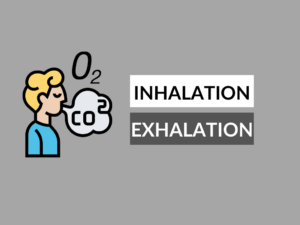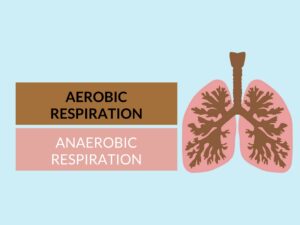Difference Between Breathing and Respiration
Breathing and respiration are two terms often used interchangeably, but they actually refer to different physiological processes. In this article, we will explore what breathing and respiration mean, their examples, uses, and finally, highlight the key differences between the two. Read on to gain a deeper understanding of these fundamental aspects of life.
What is Breathing?
Breathing is the process of taking in oxygen-rich air into the lungs and exhaling carbon dioxide. It is an automatic, involuntary action performed by most living organisms, including humans.
Examples of Breathing:
- Inhaling and exhaling during exercise
- Babies taking their first breath after birth
- Breathing deeply to calm oneself
Uses of Breathing:
- Oxygen transport to the body cells
- Removal of carbon dioxide, a waste product
- Promotes cellular respiration and energy production
What is Respiration?
Respiration is the complex biochemical process that occurs within cells to convert nutrients into energy. It can be aerobic (requires oxygen) or anaerobic (without oxygen), and is vital for the survival and functioning of living organisms.
Examples of Respiration:
- Breathing in humans
- Photosynthesis in plants
- Cellular respiration converting glucose into ATP
Uses of Respiration:
- Energy production for cellular functions
- Breakdown of nutrients for growth and repair
- Conversion of oxygen and glucose into carbon dioxide, water, and ATP
Differences Between Breathing and Respiration
| Difference Area | Breathing | Respiration |
|---|---|---|
| Process | Taking in and exhaling air | Biochemical breakdown of nutrients |
| Oxygen Requirement | Requires oxygen | Can be with or without oxygen |
| Location | Primarily in the lungs | Occurs within cells |
| Mechanism | Physical action of inhalation and exhalation | Chemical reactions within cells |
| Aims to… | Acquire oxygen and remove carbon dioxide | Produce energy and capture ATP |
| Involuntary or Voluntary? | Involuntary | Involuntary and voluntary |
| Part of which system? | Respiratory system | Metabolic system |
| Required for… | Immediate survival | Overall health and functioning |
| Frequency | Continuous process | Ongoing process within cells |
| Energy Production | Does not produce energy | Produces energy in the form of ATP |
Conclusion:
In conclusion, breathing is the physical process of inhaling and exhaling air, primarily taking place in the lungs, while respiration is the cellular process of converting nutrients into energy. While breathing is primarily associated with immediate survival and oxygen exchange, respiration is responsible for overall health and energy production within the cells.
People Also Ask:
- What is the purpose of breathing?
- What is cellular respiration?
- Can respiration occur without oxygen?
- Is respiration the same as breathing?
- Why is respiration important for living organisms?
Breathing serves the purpose of oxygenating the blood and removing carbon dioxide from the body. It ensures the supply of oxygen to body cells for metabolic processes.
Cellular respiration is the process by which cells convert nutrients into energy in the form of ATP. It involves a series of chemical reactions and is vital for the functioning of cells.
Yes, respiration can occur without oxygen and is known as anaerobic respiration. It is less efficient and produces less energy compared to aerobic respiration.
No, respiration and breathing are not the same. Breathing is a physical process involving inhalation and exhalation in the lungs, while respiration is a cellular process that occurs within cells to produce energy.
Respiration is important for living organisms as it provides energy for various cellular processes, growth, repair, and overall functioning. It enables the breakdown of nutrients and the production of ATP, the main energy currency of cells.



